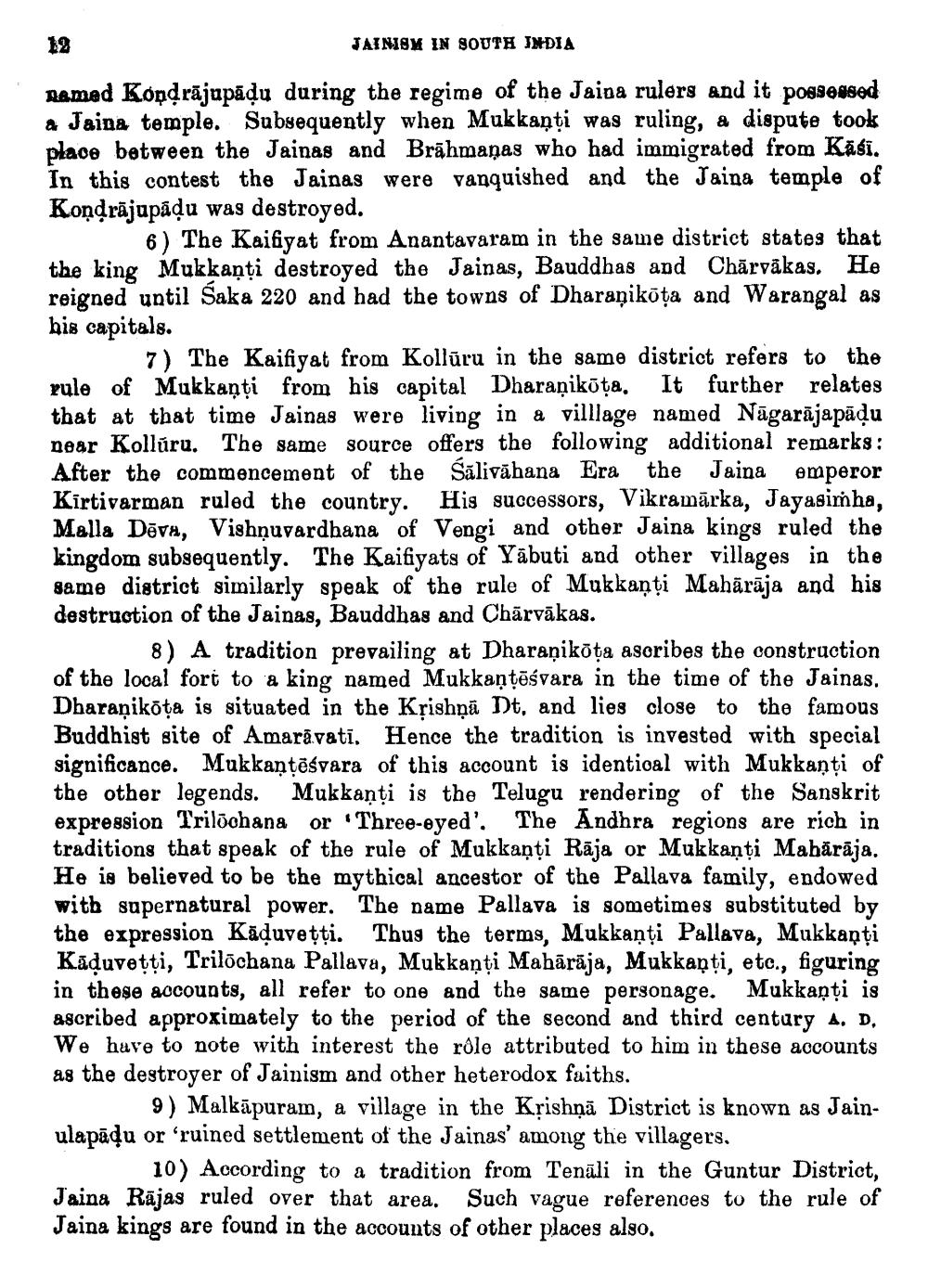________________
JAINSY IN SOUTH INDIA
Ramad Kondrājupāļu during the regime of the Jaina rulers and it possessed a Jaina temple. Subsequently when Mukkaņți was ruling, a dispute took place between the Jainas and Brāhmaṇas who had immigrated from Kāśi. In this contest the Jainas were vanquished and the Jaina temple of Koņdrājupāļu was destroyed.
6) The Kaifiyat from Anantavaram in the same district states that the king Mukkaņti destroyed the Jainas, Bauddhas and Chārvākas. He reigned until Saka 220 and had the towns of Dharaņikūța and Warangal as his capitals.
7) The Kaifiyat from Kollūru in the same district refers to the rule of Mukkaņţi from his capital Dharaņikoța. It further relates that at that time Jainas were living in a villlage named Nāgarājapāņu near Kollúru. The same source offers the following additional remarks: After the commencement of the Śālivāhana Era the Jaina emperor Kirtivarman ruled the country. His successors, Vikramārka, Jayasimha, Malla Dāva, Vishņuvardhana of Vengi and other Jaina kings ruled the kingdom subsequently. The Kaifiyats of Yabuti and other villages in the same district similarly speak of the rule of Mukkaņţi Mahārāja and his destruction of the Jainas, Bauddhas and Chārvākas.
8) A tradition prevailing at Dharaṇikõta ascribes the construction of the local fort to a king named Mukkaņtāśvara in the time of the Jainas. Dharaņikota is situated in the Krishņā Dt, and lies close to the famous Buddhist site of Amaravati. Hence the tradition is invested with special significance. Mukkaņtēsvara of this account is identical with Mukkanţi of the other legends. Mukkanti is the Telugu rendering of the Sanskrit expression Trilochana or Three-eyed'. The Andhra regions are rich in traditions that speak of the rule of Mukkaņți Rāja or Mukkanti Mabārāja. He is believed to be the mythical ancestor of the Pallava family, endowed with supernatural power. The name Pallava is sometimes substituted by the expression Kāļuvetti. Thus the terms, Mukkaņți Pallava, Mukkanți Kāļuvetti, Trilochana Pallava, Mukkanti Mahārāja, Mukkaņti, etc., figuring in these accounts, all refer to one and the same personage. Mukkanți is escribed approximately to the period of the second and third century A. D. We have to note with interest the rôle attributed to him in these accounts as the destroyer of Jainism and other heterodox faiths.
9) Malkāpuram, a village in the Krishņā District is known as Jainulapāļu or 'ruined settlement of the Jainas' among the villagers.
10) According to a tradition from Tenāli in the Guntur District, Jaina Rājas ruled over that area. Such vague references to the rule of Jaina kings are found in the accounts of other places also.




